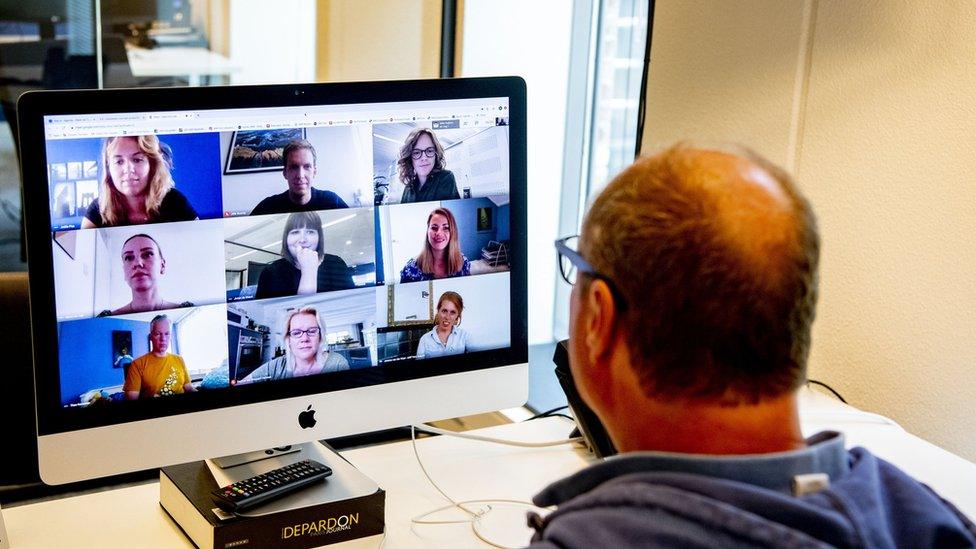Zoom orders workers back to the office
- Published

Zoom, the video communications company whose name became synonymous with remote work during the pandemic, has ordered staff back to the office.
The firm said it believed a "structured hybrid approach" was most effective and people living within 50 miles (80km) of an office should work in person at least twice a week.
It is the latest push by a major firm to row back flexible working policies.
Amazon and Disney are among the firms that have reduced remote work days.
Surveys suggest that workers are still holding onto the ability to work from home to some degree.
About 12% of workers in the US, where Zoom is headquartered, were fully remote in July, while another 29% had hybrid policies, according to a survey, external by researchers at Stanford University and others that has been conducted monthly since the pandemic.
That is similar to patterns recorded by the Office for National Statistics in the UK earlier this year.
Earlier research by the Stanford team has found remote work is more common in English-speaking countries, and far less common in Asia and Europe.
Before the pandemic, the share of days worked from home in the US was only about 5%. Globally, workers consistently desire more flexible working arrangements than employers see as optimal.
Zoom at one point said staff would be able to work remotely indefinitely.
The tech firm said the new policy would be rolled out in August and September, on a staggered timeline that varied by country.
It said it would continue to "hire the best talent, regardless of location". At the end of January, the company employed about 8,400 people, more than half of whom were based in the US.
About 200 people currently work for Zoom in the UK, where it just opened a new London office.
Zoom said that the new policy, which was first reported by Business Insider, external, would put the company in a "better position to use our own technologies, continue to innovate, and support our global customers".
"We'll continue to leverage the entire Zoom platform to keep our employees and dispersed teams connected and working efficiently," Zoom said.
Only about 1% of the company's workers had "regular office presences" in September 2022, while 75% lived remotely and the remainder had hybrid arrangements, the Wall Street Journal reported at the time.
But Zoom is under mounting pressure as the expansion of remote work prompts rivals, such as Microsoft, to upgrade their video offerings.
Growth has slowed sharply since the pandemic. Earlier this year, it announced it was cutting 15% of its staff and top executives would take major pay cuts.
Its shares are worth about $68 apiece today, down from more than $500 at the peak in October 2020.
Related topics
- Published23 March 2023

- Published7 February 2023

- Published1 June 2023
